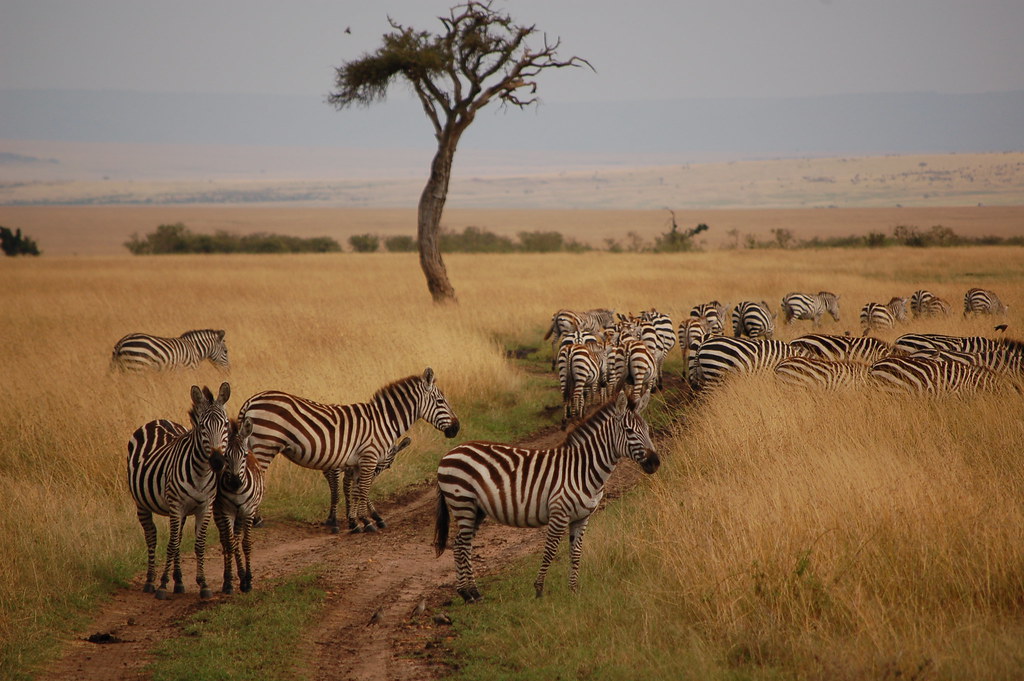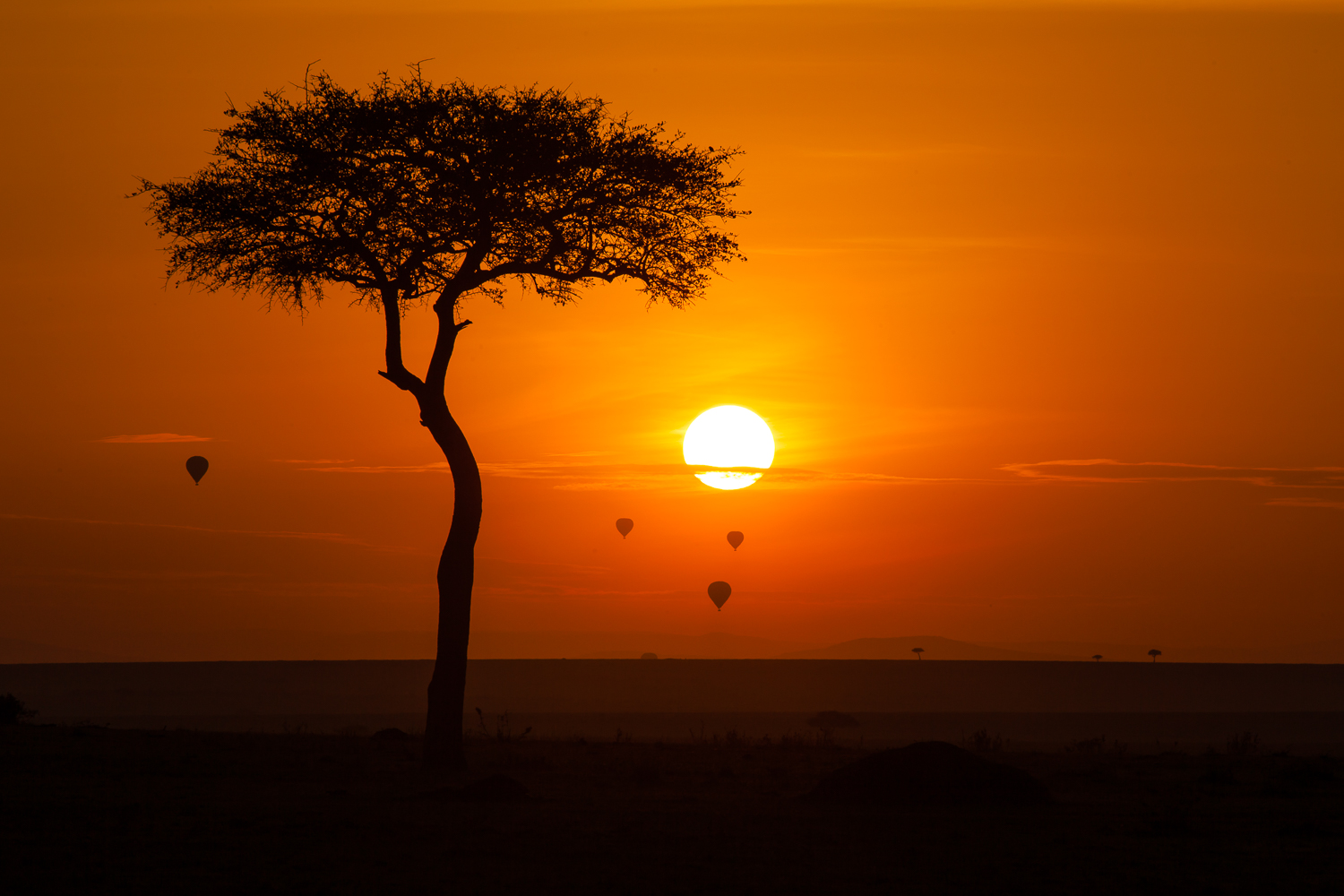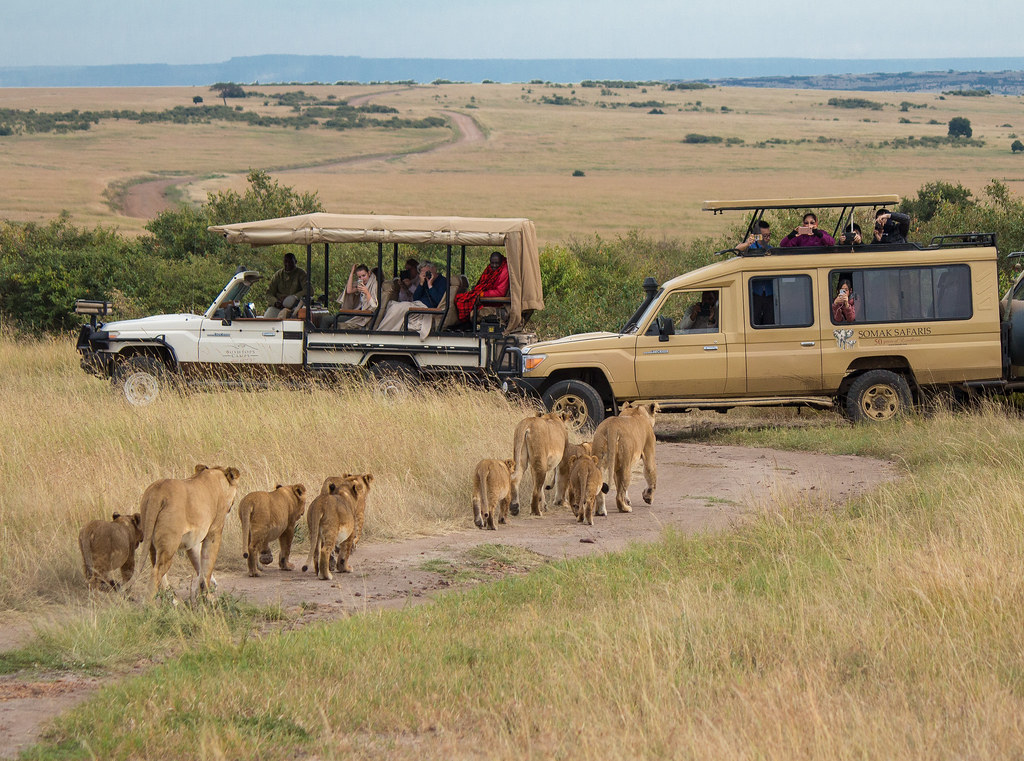The Maasai Mara, a stunning expanse of wildlife and untamed beauty, has long captivated the hearts of nature enthusiasts from around the world. Nestled in southwestern Kenya, this legendary territory boasts an abundance of astonishing wildlife, offering scientists and researchers an invaluable opportunity to delve into the secrets of the animal kingdom. As the sun rises over the rolling savannah, casting a warm golden glow upon the vast plains, curious minds are tirelessly at work, weaving together a tapestry of knowledge about the incredible wildlife that call the Maasai Mara home. Today, we delve into the captivating realm of wildlife research in the Maasai Mara, exploring the remarkable studies currently underway and uncovering the fascinating discoveries being made in this remarkable corner of the world.
Table of Contents
- Wildlife Population Surveys and Monitoring Strategies in Maasai Mara
- Effects of Human-Animal Interaction and Tourism on Wildlife Behavior in Maasai Mara
- Conservation Measures and Efforts to Protect Endangered Species in Maasai Mara
- Assessing the Impact of Climate Change on Wildlife Habitats in Maasai Mara
- Exploring Sustainable Wildlife Management Practices in Maasai Mara
- Q&A
- In Retrospect
Wildlife Population Surveys and Monitoring Strategies in Maasai Mara

In the vast savannahs of Maasai Mara National Park, a plethora of wildlife surveys and monitoring strategies are currently underway to better understand and protect the diverse species that call this place home. Researchers and conservationists are diligently working to gather data on population sizes, migration patterns, behavior, and habitat preferences of a wide range of animals.
One of the prominent methods used in wildlife research in Maasai Mara is camera trapping. These inconspicuous devices are strategically placed across the park, capturing candid moments of elusive animals such as leopards, cheetahs, and hyenas. By analyzing the images and videos collected, scientists can estimate population sizes and assess the health of these predator species. This valuable information aids in implementing conservation strategies to ensure the long-term survival of these magnificent creatures.
In addition to camera trapping, researchers are also utilizing radio-telemetry tracking. This technique involves fitting animals with specially designed collars that transmit signals, allowing scientists to monitor their movements in real-time. It provides crucial data on migration routes, feeding habits, and social interactions of iconic species like elephants, lions, and zebras. Such insights are instrumental in understanding the ecological dynamics of Maasai Mara and devising effective conservation initiatives.
Stories Experiences Travel can guide you in organizing thrilling safaris to Maasai Mara, where you can witness the incredible wildlife research firsthand. Let our knowledgeable guides lead you to the heart of this extraordinary ecosystem, ensuring a safe and engaging experience. We take pride in our expertise in planning African adventures, addressing all your concerns from health and safety to cultural sensitivity. Our comprehensive services cater to every aspect of your journey, including wildlife encounters, logistical challenges, and budget considerations. Trust us to create unforgettable, worry-free journeys as you explore the wonders of Maasai Mara and beyond.
Effects of Human-Animal Interaction and Tourism on Wildlife Behavior in Maasai Mara

In Maasai Mara, a wide range of wildlife research is currently being conducted to understand the effects of human-animal interaction and tourism on wildlife behavior. Researchers are studying the various impacts that human presence and tourism activities have on the natural behaviors of animals in the park. Through extensive observation and data collection, they aim to uncover the ways in which these interactions may influence the behavior, feeding patterns, migration routes, and breeding habits of the wildlife species inhabiting Maasai Mara National Park.
Some of the specific research topics being explored include:
-
Behavioral Changes: Researchers are investigating how the presence of humans and tourist vehicles affects the behavior of different animal species. They are examining whether patterns such as increased aggression, altered mating rituals, or changes in feeding habits can be attributed to the frequent interaction with humans.
-
Stress and Disturbance Levels: Experts are monitoring stress levels in the wildlife population to determine the impact of tourism on their overall well-being. They are assessing how factors like noise pollution, increased vehicle traffic, and human presence can lead to elevated stress levels, affecting key aspects of animal health and survival.
Research efforts in Maasai Mara are crucial for understanding the complex dynamics between humans, animals, and tourism. By analyzing the effects of human-animal interaction, researchers are striving to develop sustainable and responsible tourism practices that protect the delicate balance of the ecosystem while still providing visitors with unforgettable experiences.
Conservation Measures and Efforts to Protect Endangered Species in Maasai Mara

In the vast and breathtaking Maasai Mara, a hub of wildlife biodiversity and unparalleled natural beauty, numerous research initiatives are currently underway to understand, protect, and conserve the region’s endangered species. These initiatives play a pivotal role in the preservation and sustainable management of the Maasai Mara National Park, ensuring that its diverse ecosystem remains intact for future generations to witness and cherish.
Researchers in Maasai Mara are conducting extensive studies on the elusive and majestic African lion, aiming to gain insights into their behavior, population dynamics, and habitat requirements. Through careful monitoring and advanced tracking technologies, scientists are able to gather valuable information on lion movements, their prey selection, and potential conflicts with human settlements. These findings are crucial in implementing effective conservation measures that minimize human-wildlife conflicts and protect the dwindling population of African lions.
At the same time, researchers are diligently studying the endangered cheetah population in Maasai Mara, focusing on their ecological interactions, hunting behavior, and breeding patterns. This research not only sheds light on the unique adaptations of cheetahs but also helps identify key conservation areas and corridors necessary for their survival. Conservation efforts specifically tailored for cheetahs, such as habitat preservation and anti-poaching strategies, are being developed based on these scientific studies.
Looking to explore Maasai Mara and witness these ongoing wildlife research efforts? Stories Experiences Travel is your trusted companion in planning an unforgettable African adventure. With a wide range of services tailored to your needs, including personalized itineraries, expert guides, and seamless logistics, we ensure a worry-free journey while prioritizing your health and safety. Whether you’re interested in wildlife encounters, cultural immersions, or budget considerations, our dedicated team is committed to crafting a truly enriching and memorable experience for you in the heart of Maasai Mara. Contact us now and embark on a journey of a lifetime!
Assessing the Impact of Climate Change on Wildlife Habitats in Maasai Mara

In the vast and breathtaking Maasai Mara National Park, a world of wildlife research awaits to unfold the mysteries of this iconic African habitat. Dedicated scientists and conservationists are tirelessly working to assess the impact of climate change on the diverse wildlife populations that call Maasai Mara home.
One of the key focuses of research in Maasai Mara is understanding how climate change affects the habitats of the park’s majestic megafauna, such as lions, elephants, and giraffes. Scientists are studying the changes in vegetation patterns and water availability, as these factors play a vital role in shaping the distribution and behavior of these incredible animals. Through rigorous data collection and analysis, researchers aim to gain insights into the long-term effects of climate change on the wildlife habitats, ultimately contributing to conservation efforts and sustainable management of this unique ecosystem.
While the researchers diligently work behind the scenes, Stories Experiences Travel stands ready to guide you in experiencing the wonders of Maasai Mara and witness first-hand the impacts of climate change on its wildlife habitats. As a leading travel company specializing in African adventures, we offer comprehensive services to ensure your trip is seamlessly organized and unforgettable.
- Health and safety: Your well-being is our top priority. We take every precaution to ensure your journey is safe and secure.
- Cultural sensitivity: Immerse yourself in the rich Maasai culture with our expert guides who will introduce you to their traditions and customs.
- Wildlife encounters: Encounter the incredible diversity of Maasai Mara’s wildlife through carefully planned game drives and nature walks.
- Logistical challenges: Leave the logistical arrangements to us, from transportation to accommodations, so you can focus on enjoying your adventure.
- Budget considerations: We strive to offer flexible options that cater to different budgets, making your dream African trip accessible.
With Stories Experiences Travel, embark on a worry-free journey that immerses you in the wonders of Maasai Mara, while contributing to the ongoing research and conservation efforts in this remarkable ecosystem.
Exploring Sustainable Wildlife Management Practices in Maasai Mara

In the vast and captivating Maasai Mara National Park, numerous wildlife research projects are currently underway, shedding light on the intricacies of sustainable wildlife management practices. With the park being a global hotspot for biodiversity and home to iconic species like the lions, elephants, and cheetahs, scientists are eager to understand their behaviors, population dynamics, and interactions within the ecosystem.
One exciting research project focuses on studying the movement patterns of the Maasai Mara’s magnificent wildebeest migration. Using cutting-edge GPS technology, researchers are able to track the herds and gain insights into their migratory routes, grazing patterns, and habitat preferences. This information is crucial for developing effective conservation strategies and ensuring the long-term survival of this awe-inspiring natural phenomenon.
Another ongoing research endeavor aims to assess the impact of human activities on the resident wildlife population. By monitoring the effects of tourism, grazing, and other anthropogenic factors, scientists can better understand how to mitigate potential disturbances and strike a balance between wildlife conservation and the sustainable utilization of resources. Through careful data collection, they hope to provide valuable recommendations for managing the delicate coexistence between humans and wildlife in the Maasai Mara National Park.
With an abundance of captivating wildlife research happening in Maasai Mara, a journey to this breathtaking destination promises not only mesmerizing encounters with the animal kingdom but also the opportunity to be a part of ongoing conservation efforts. Allow Stories Experiences Travel to guide you on an unforgettable African adventure, where you can witness firsthand the impressive research projects taking place and contribute to the preservation of this incredible ecosystem.
Q&A
Q: What kind of wildlife research activities are taking place in Maasai Mara?
A: Delving into the fascinating world of Maasai Mara’s wildlife, various research endeavors are being carried out to uncover the secrets of this renowned ecosystem.
Q: What aspects of wildlife research are currently being focused on in Maasai Mara?
A: Research initiatives in Maasai Mara encompass a wide range of topics, including animal behavior, ecosystem dynamics, migration patterns, inter-species interactions, conservation management, and human-wildlife coexistence.
Q: Could you provide some examples of ongoing wildlife studies in Maasai Mara?
A: Certainly! Researchers are actively observing the behavioral patterns of iconic African species such as lions, elephants, giraffes, wildebeests, and cheetahs. They are studying social structures, hunting techniques, mating rituals, and communication among these magnificent creatures.
Q: How are researchers studying migration patterns in Maasai Mara?
A: Through satellite tracking technology and field observations, scientists are meticulously tracking the annual Great Wildebeest Migration – known as one of the most extraordinary wildlife spectacles on earth. By monitoring the movement patterns of wildebeests, zebras, and other herbivores, researchers are untangling the factors that shape their migration and its significance in the ecosystem.
Q: How do researchers investigate inter-species interactions?
A: Researchers are keenly studying the intricate web of interactions between different species in Maasai Mara. By closely examining predator-prey dynamics and the effects of these interactions on overall ecosystem health, scientists are contributing to a greater understanding of the complex relationships between carnivores, herbivores, and their habitats.
Q: What does wildlife research in Maasai Mara offer in terms of conservation management?
A: The cutting-edge research conducted in Maasai Mara helps conservation managers develop effective strategies to protect wildlife populations and their habitats. By analyzing population dynamics, ecological trends, and threats to biodiversity, researchers assist in creating sustainable conservation plans aimed at preserving the region’s unique wildlife.
Q: How does wildlife research address human-wildlife coexistence in Maasai Mara?
A: In Maasai Mara, where human settlements border wildlife territories, researchers are investigating ways to minimize conflicts and promote harmonious coexistence. They examine the socio-economic impacts of living alongside wildlife, develop community-based conservation models, and implement measures to mitigate human-wildlife conflicts.
Q: Can you provide insights into the potential impact of current wildlife research in Maasai Mara?
A: The ongoing wildlife research in Maasai Mara is invaluable. It not only enhances our understanding of this captivating ecosystem but also informs wildlife management practices and contributes to global conservation efforts. Moreover, the findings have the potential to influence policies and encourage sustainable practices, ensuring the longevity of Maasai Mara’s wildlife treasures for generations to come.
In Retrospect
As you delve into the fascinating world of wildlife research in Maasai Mara, you may find yourself longing for an up-close encounter with these magnificent creatures. But fear not, for Stories Experiences Travel can turn your dream into a reality. With their unrivaled expertise in African adventures, they will guide you through every step of the journey. From ensuring your health and safety to cultivating cultural sensitivity, they address all your concerns. Whether it’s wildlife encounters or overcoming logistical challenges, they have got you covered. And let’s not forget about your budget—Stories Experiences Travel specializes in crafting worry-free journeys without breaking the bank. So trust their commitment to deliver enriching experiences throughout Africa. Get ready for the adventure of a lifetime!




